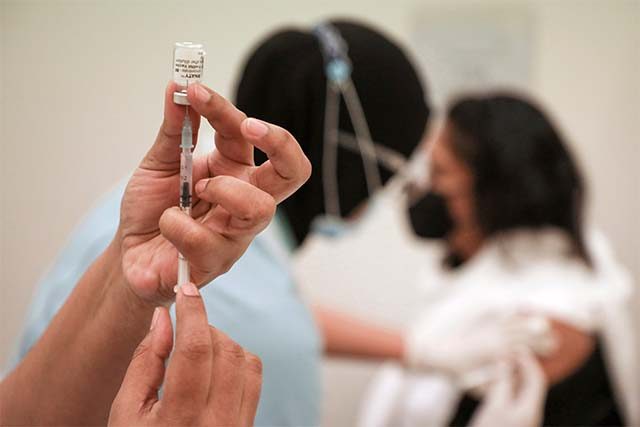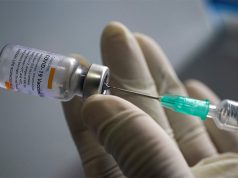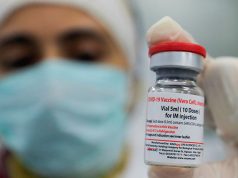
Vaccines from all seven manufacturers the national government secured deals with are effective in preventing the virus which causes COVID-19.
Vaccinologist Melvin Sanicas highlighted this in a summary list amid the still prevalent vaccine hesitancy among Filipinos.
In a tweet on March 8, Sanicas listed down and compared the efficacy rates from clinical trials of seven COVID-19 vaccine brands and their types:
- Pfizer-BioNTech – mRNA in lipid nanoparticle, two doses
- Moderna – mRNA in lipid nanoparticle, two doses
- AstraZeneca-Oxford – Non-replicating chimp adenovirus, two doses
- Sinovac – inactivated SARS-CoV-2 coronavirus, two doses
- Gamaleya – Ad26 & Ad5 adenovirus vector, two doses
- Johnson&Johnson – Non-replicating human adenovirus, one dose
- Novavax – S protein/RBD; Martix M adjuvant, two doses
All seven COVID-19 vaccines that have completed large efficacy clinical trials are very effective in preventing severe COVID. Not one vaccinated person has gotten sick enough to require hospitalization. Not a single vaccinated person has died of COVID-19. pic.twitter.com/zBwyL880BZ
— Dr. Melvin Sanicas 🩺🔬 (@Vaccinologist) March 8, 2021
The COVID-19 vaccines have 100% protection from hospitalization except Moderna which still has a high rate of 97%.
All of them also passed the 50% threshold of efficacy of the World Health Organization. Nearly all vaccines have 100% efficacy rates except Sinovac, Moderna and Johnson&Johnson.
The three brands still render high results—Sinovac at 83%, Johnson&Johnson at 85.4% and Moderna at 97%.
Sanicas expressed confidence in the effectivity of these vaccines, citing no reported deaths related to COVID-19 and hospitalization.
“All seven COVID-19 vaccines that have completed large efficacy clinical trials are very effective in preventing severe COVID,” Sanicas said.
“Not one vaccinated person has gotten sick enough to require hospitalization. Not a single vaccinated person has died of COVID-19,” he added.
Public health physician Sanicas was hailed as among the 100 health professionals influencing COVID-19 conversations across the world last year.
The infectious disease expert earned his medical degree at the University of the Philippines-Manila.
As of writing, only vials from AstraZeneca and Sinovac have arrived in the Philippines.
On February 28, shipment of 600,000 Sinovac’s CoronaVac vials arrived and days later, on March 4, the cargo of 487,200 doses of AstraZeneca arrived while the remaining 38,400 doses arrived last Sunday.
The national government’s vaccination program started on March 1 with Sinovac’s CoronaVac at the Philippine General Hospital.
The inoculation of the Astrazeneca’s COVID-19 vaccine started on March 9.
Recent vaccine issues
Amid the ongoing immunization program, Denmark, Norway and Iceland reportedly suspended their AstraZeneca jabs to investigate if these were related to blood clotting cases among their residents.
READ: Philippines to continue AstraZeneca vaccinations amid suspensions in Europe
The European Medicines Agency was quoted by CNN Philippines clarifying that there is “no clear indication” that the vaccines caused the blood clot conditions in these three countries.
“The vaccine’s benefits continue to outweigh its risks and the vaccine can continue to be administered while investigation of cases of thromboembolic events is ongoing,” the agency said.
In the Philippines’ own rollout, the Department of Health also advised not to suspend the AstraZeneca jabs, echoing EMA’s statement.
“Following reports of a few EU countries suspending their COVID-19 vaccination program as a precautionary measure, DOH-FDA find no reason to suspend AZ vaccine in the PH as benefits of vaccination continue to outweigh the risk. DOH, NTF, FDA will closely monitor the vaccine deployment program,” said DOH.
Pfizer-BioNTech also faced a similar issue wherein there were patients in Norway who died after being inoculated with their vaccines.
Pfizer and the Norwegian Medical Agency responded and clarified that there were no confirmed evidence that suggested the vaccine directly caused the deaths.








